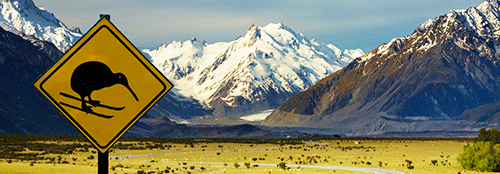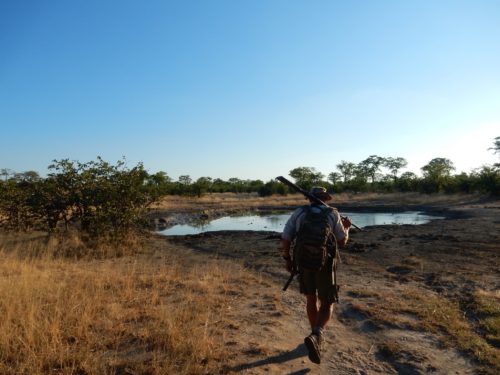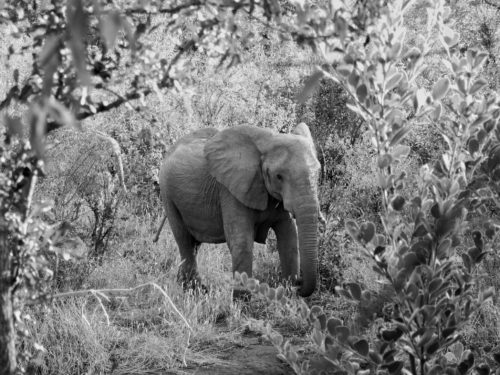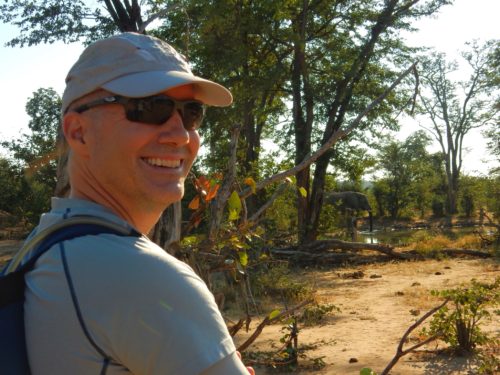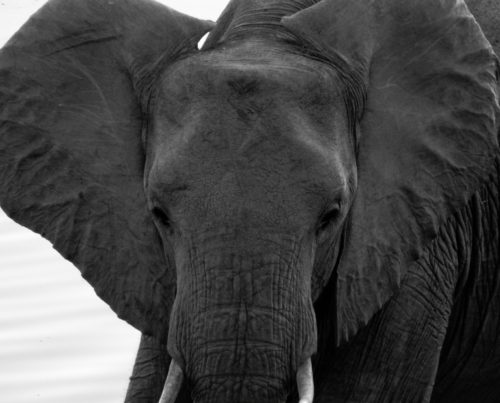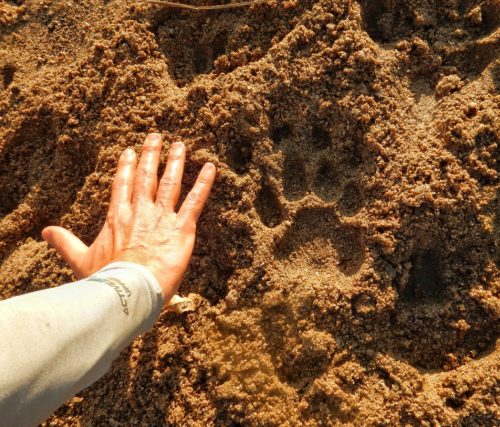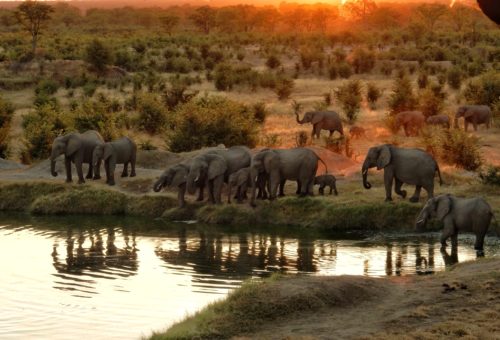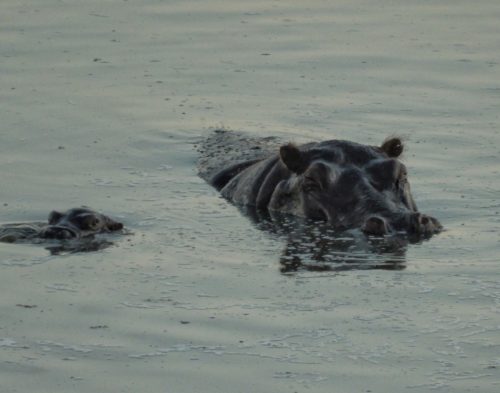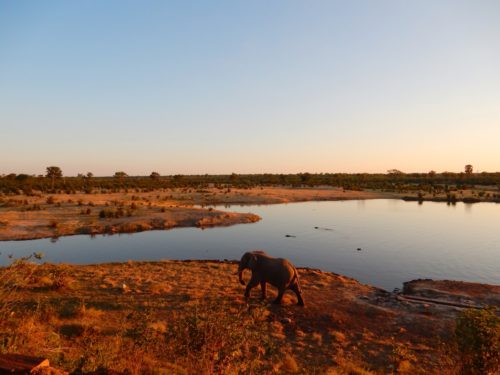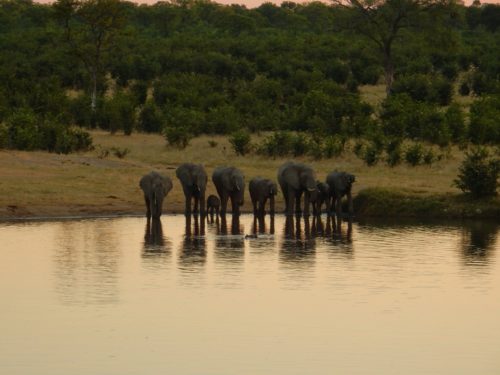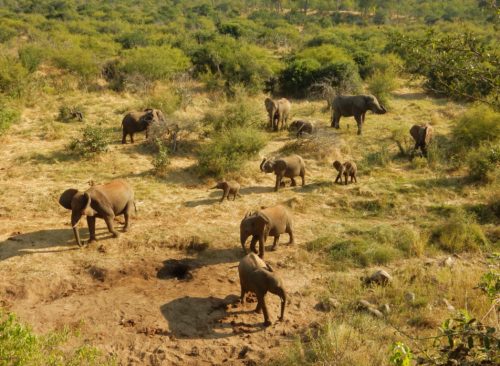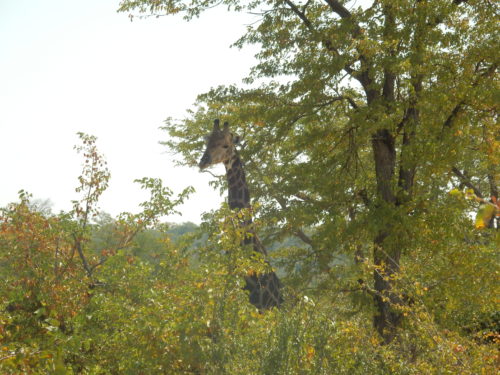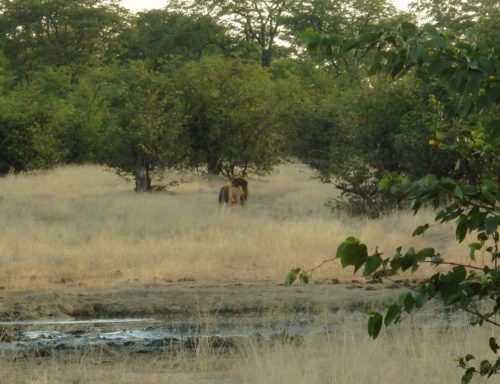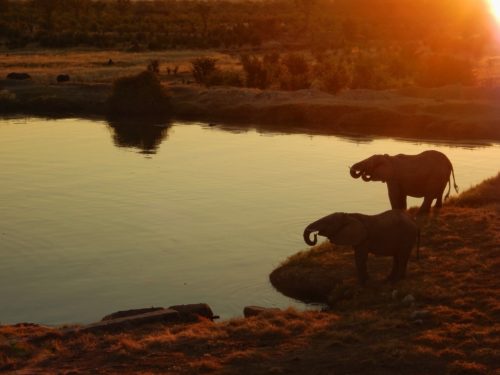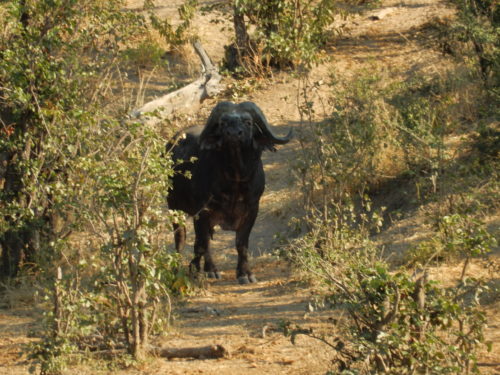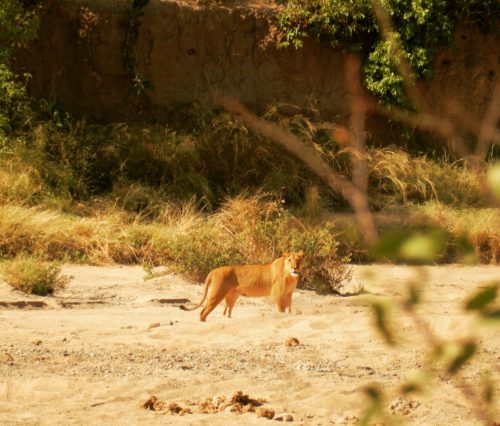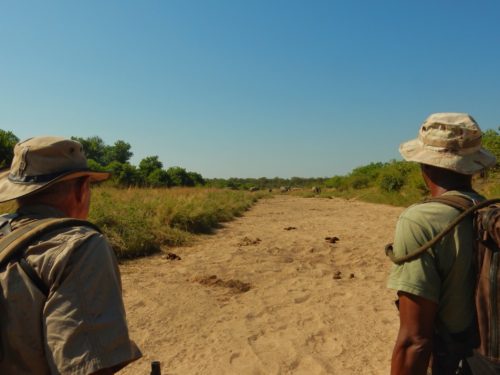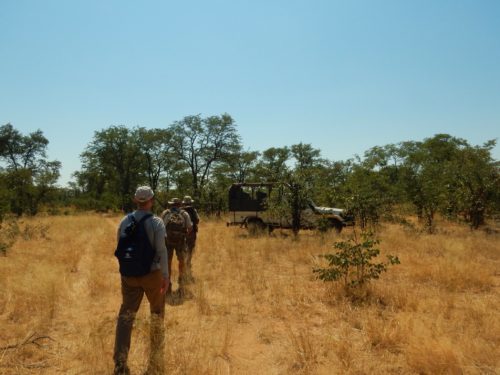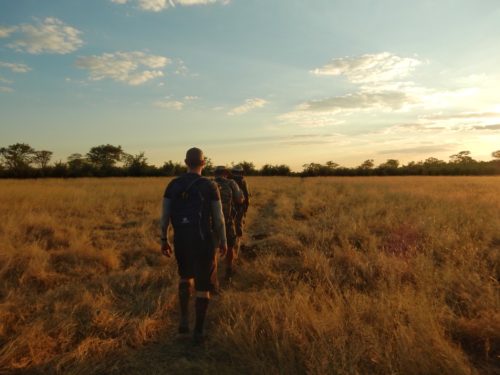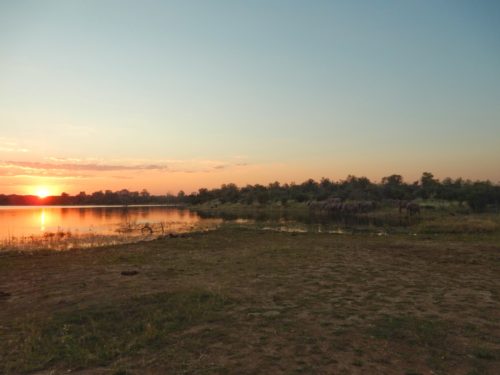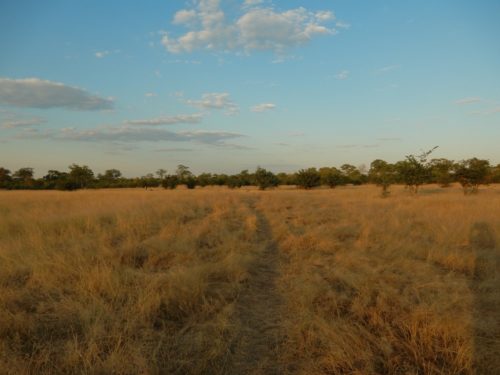Leon Varley Walking Safari, Zimbabwe
30 April – 3 May 2016 (Sinamatella Area, Hwange National Park, Zimbabwe) —
A walking safari with legendary safari guide Leon Varley was the reason that we chose Zimbabwe as our destination. Leon has been guiding walking safaris for over 30 years, and has a great reputation across Southern Africa. Both Leon and our experience lived up to our expectations.
Leon normally guides groups of six, but the other four people in our group had to reschedule so it was just V and me. After Leon heard that we had recently biked across the Karoo, he decided “to take advantage of [our] fitness” and cover a lot more ground than he normally would. We averaged about 25km per day through pure bush and soft riverbed sand. We went to bed knackered every night.
But first we started with a safety talk: “Of the big five, four will mock charge: lion, elephants, leopards, and rhino. If a buffalo charges, he means it so run. If any of the other four charge, DO NOT RUN and ESPECIALLY do not run if it’s a lion. I’ve only had to shoot three lions in 30 plus years of guiding and two were because the guests ran before I said so. If I tell you to run, run. But always keep me and the gun between you and the animal. And stay on your feet.” With our 45 second safety talk over, we headed out.
Our tracker Obit picked up the trail of some elephants, and we were soon hiding in some bushes watching them feed. When the wind shifted, they picked up our scent and went charging off in the opposite direction.
Soon, Obit and Leon picked up the trail of a lion, and we snuck up on a watering hole where we thought he might be. We knew were were close because we were no more than 10 minutes behind an elephant based on the freshness of his dung and some of the lion tracks were on top of the fresh dung.
We did not see the lion, but as we were marveling over his hairball — no joke, he had coughed up an enormous hairball next to the watering hole — the world’s quietest elephant came out of the bush 10 meters from where we were standing. I don’t know who was more surprised — our group or the ele. We scurried off in the opposite direction, and then ended the day with sundowners at a campsite overlooking a large watering hole filled with hippos, crocs and eles.
The next morning was spent looking for Leon’s white whale — technically, a black rhino. Nicknamed Forrest Gump, this rhino is one of seven surviving in an area that once had over 100 rhinos. His survival mechanism is that he basically never stops moving (unlike most rhino which will bed down during the heat of the day). The morning was much more walking than safari, but we still saw heaps of ele and giraffe and loved every minute of it, even if Forrest continued to elude us.
Our afternoon walk was a point to point looking for Forrest with the plan to end at the same spot at which we had sundowners the night before. As we came around the corner to the watering hole from yesterday, Obit crotched down and got super excited, motioning at V. V heard “come here” but what he was really saying was “camera.” The lion we tracked the day before was just across at the watering hole. For a few seconds, the lion stared at us across the watering hole before running away, looking back, and then running away again.
The picture was a late shot just before the lion ran away, but the sighting was one of the best of our lives. Encountering a lion while on foot is an exhilarating experience, and Leon noted that Every. Single. Time. Obit gets excited like that (as does Leon, to a lesser extent). Huge permagrins creased all our faces as we enjoyed sundowners and recapped a wonderful encounter.
In the morning, Leon could not help but laugh when he saw Forrest’s day-old tracks not far outside our camp. In other words, Forrest was within a few hundred yards of our base while we walked over 15km looking for him.
We set out on another Forrest quest, but within an hour, we had encountered a buffalo herd at a watering hole. Thankfully, the wind was on our side and we got to watch them for a while before it shifted and they ran. We then hid as the tail end of the herd — some old grumpy males — came down to the watering hole. One had picked up our scent and was going mental trying to figure out where we were.
Luckily, the old bulls ran off in the opposite direction and we carried on, soon encountering a herd of elephants below us in a riverbed. The wind was favorable, and we hid in the bushes for almost 20 minutes while a baby ele drove his mum absolutely nuts with his antics.
Unfortunately, another ele herd started approaching behind us and we had to backtrack to avoid them. After several hundred meters of backtracking, Obit got super excited, and this time V was ready. Across the empty river bed was a beautiful lioness. We stood as still as possible but she immediately saw us with her peripheral vision — it was amazing how quickly she spotted us. She turned and stared directly at us. V snapped off a few shots before the lioness ran off. Leon thought she might be a nursing mother going to pick up her cubs, and V’s photo confirmed that to be the case. We thus could not follow her, and had to backtrack (again) and try to avoid the two herds of elephants.
As we were doing so, Obit and Leon saw some human footprints on the ground and got nervous — Zimbabwe has a shoot-to-kill policy for poachers, and Leon assists with patrols. (Several hours later, we came across a watering hole that Leon noted had been the one poisoned a few months ago by poachers to kill over 20 elephants; the poaching concern was and is a real one.)
But Obit examined the prints and concluded it was “two rangers and a police officer.” Which seemed rather specific, but he said he could tell by the type of boot print. We followed their tracks for a bit until we found two rangers and a police officer literally hiding in a grove of trees. They had been charged by the second group of elephants and were currently hiding out from them.
After a quick conference, it was confirmed that our only safe way out was a hot slog along the dry and sandy riverbed while avoiding the ele’s and the lioness.
We continued on, and after another hour so, we wearily approached the truck almost five hours after we started. Within a few hundred meters of the truck, Leon froze and motioned for us to get down. We had managed to stumble upon another herd of buffalo. We hid and watched them for several minutes, until they picked up our sent and stampeded off in the other direction.
The remaining walks were filled with numerous ele’s and other game, although no predators and no Forrest. At one point, we spent several hours tracking a pride of lions while trying to avoid (another) lioness with a cub that seemed to be shadowing them (Leon figured the mother had broken off to raise the cub for a bit). During the middle of that, we came across tracks for wild dogs but they headed in the same direction as the mother lioness so we could not follow. Even when there were no exciting sightings, being (hopefully) the only humans in the bush was amazing.
Both V and I had done walking safaris before, but only the short nature-hike type out of a safari camp. This was an entirely different experience and I highly recommend it to anyone who’s been on safari before but wants a different (and arguably better) experience. Being on foot to track and watch these magnificent creatures on their own turf was an unforgettable experience and one that we hope to experience again soon.
